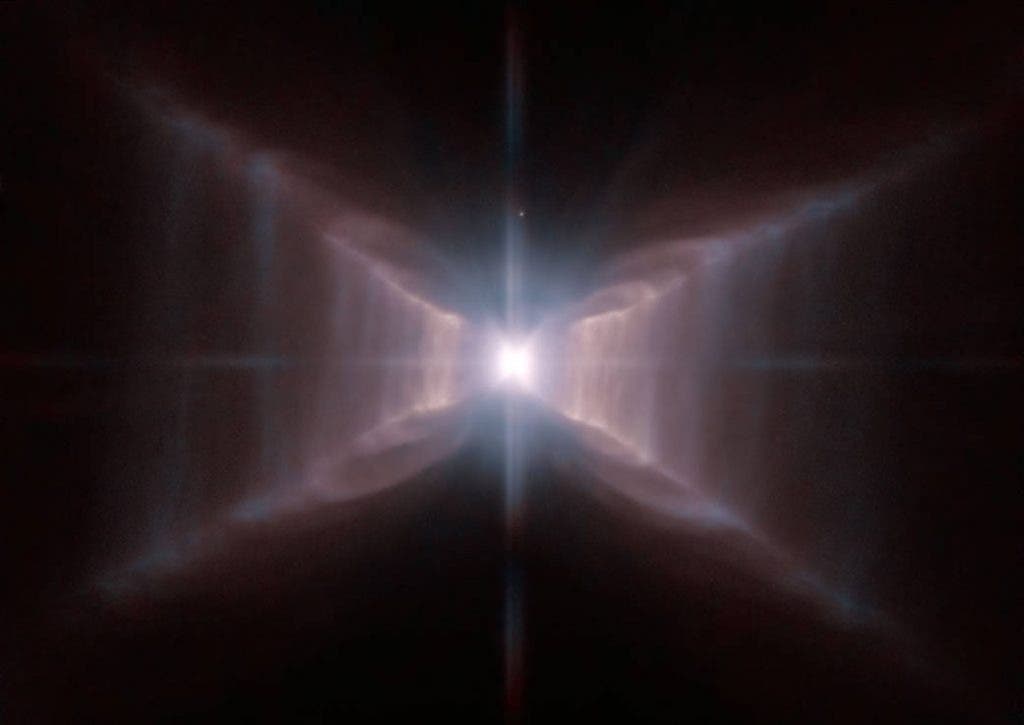We don’t give it a lot of through, but things in space are generally round. Not the Red Rectangle though – this nebula is… well, rectangular.

According to NASA, this is actually a binary star system. The stars at its center are similar to the Sun, but they are reaching the end of its lifetime as a star, and hence ejecting gas and other material to make the nebula, giving it its distinctive shape. NASA writes:
“The Red Rectangle is an unusual example of what is known as a proto-planetary nebula. These are old stars, on their way to becoming planetary nebulae. Once the expulsion of mass is complete a very hot white dwarf star will remain and its brilliant ultraviolet radiation will cause the surrounding gas to glow. The Red Rectangle is found about 2,300 light-years away in the constellation Monoceros (the Unicorn).”
Before, astrophysicists were unsure why this nebula had the shape and color it does, but this Hubble picture sheds a lot of light on the issue. The binary system is shooting out gas in an ‘X’ shape, and the color comes from the hydrogen ejection.
In a way, this nebula is providing a glimpse into the future of our own sun. It too will become brighter and brighter and ultimately start ejecting gas and matter, completing its transformation into a white dwarf. However, this won’t happen anytime soon, we still have a few billion years to wait, so let’s enjoy this red rectangle in the meantime.





